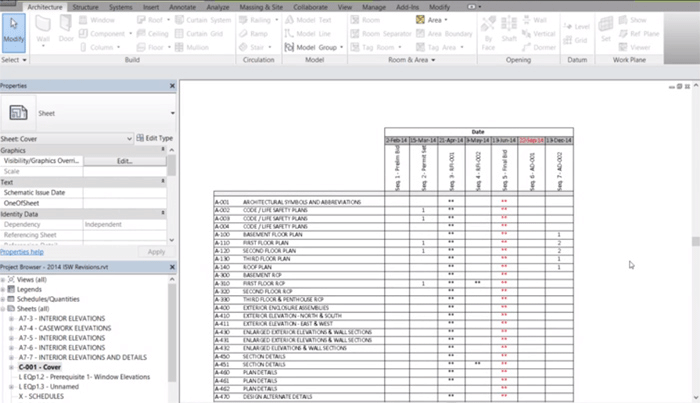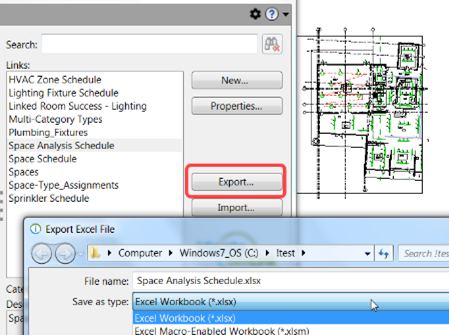Revit Tools: Your Secret to Precision and Efficiency
Wiki Article
Excel-to-Revit: A Game-Changing Process for Architectural Style - Revealing the Secrets
Presenting excel-to-revit, the game-changing operations that will certainly change your layout procedure. With excel-to-revit integration, you can improve your architectural design, unlock performance, and make best use of partnership within your team. Get prepared to take your building design to the next level with excel-to-revit!The Power of Excel-to-Revit Assimilation

Imagine the convenience of having the ability to upgrade and modify job information in Excel, and promptly see those changes shown in your Revit version. Say goodbye to hands-on data access or tedious updates. With Excel-to-Revit integration, you can save time and lower mistakes by leveraging the power of Excel's formulas and features to immediately generate exact information in Revit.
Not just does this assimilation improve performance, but it likewise enhances cooperation among employee. You can quickly share Excel documents with coworkers, that can then import the data right into their Revit versions. This promotes a smooth exchange of information and ensures that everybody is functioning with the most updated data.

Simplifying Architectural Style With Excel-To-Revit
Streamlining architectural layout is simplified with using Excel-to-Revit (import excel into revit). With this powerful integration, you can enhance your operations and save beneficial time throughout the style procedure. By leveraging the capabilities of Excel and Revit, you can effortlessly move information in between the two systems, eliminating the demand for hand-operated data entry and lowering the threat of errorsExcel-to-Revit enables you to import and export data effortlessly, enabling you to quickly update and customize your building layouts. You can produce routines, compute amounts, and generate reports in Excel, and afterwards transfer that information straight into your Revit version. This combination guarantees that your style information is always up-to-date and integrated, removing the demand for hand-operated updates and minimizing the possibilities of inconsistencies.
By making use of Excel-to-Revit, you can also take benefit of the powerful computational abilities of Excel. You can perform intricate estimations, assess data, and automate repetitive tasks, all within Excel. With simply a couple of clicks, you can import the outcomes back into Revit, enabling you to make educated style choices and optimize your building styles.
Opening Effectiveness: Checking Out the Excel-to-Revit Operations
Optimize your performance by flawlessly integrating Excel and Revit for a more effective process. With the Excel-to-Revit operations, you can open a whole new degree of efficiency in your building design procedure. By utilizing the power of Excel's information monitoring capacities and integrating it with the flexibility and precision of Revit, you can enhance your design process and conserve important time.Among the crucial benefits of this combination is the ability to import and export data between Excel and Revit. This means that you can easily move job info, such as space schedules or material amounts, from one software to the various other, getting rid of the requirement for hands-on data entrance and reducing the opportunities of errors. You can likewise produce customized solutions and computations in Excel to automate recurring tasks and execute complicated estimations, which can then be perfectly incorporated right into your Revit designs.
Additionally, the Excel-to-Revit process enables much better sychronisation and collaboration between group participants. With Excel acting as a central information center, multiple staff member can work with different elements of the task at the same time, sharing and updating info in real-time. This not only enhances communication but likewise ensures that every person is functioning with one of the most up-to-date information, removing the risk of variances.
Making The Most Of Collaboration: Excel-to-Revit for Architectural Teams
By seamlessly integrating Excel and Revit, building teams can significantly improve collaboration and attain much more reliable design end results. When using this powerful workflow, you can conveniently transfer information in between Excel spreadsheets and Revit models, simplifying the design process and enhancing communication amongst employee. With Excel-to-Revit assimilation, you can easily import project data, such as area timetables, material amounts, and task criteria, straight into Revit, eliminating the demand for hands-on data entry and decreasing the chances of errors. This seamless link enables real-time updates, making certain that every person is functioning with the most updated details and avoiding inconsistencies between different records.Additionally, by leveraging Excel's powerful computation capacities, you can perform complex computations and evaluation on your style information, driving and offering useful insights notified decision-making. This combination also enables you to export information from Revit to Excel, allowing you to produce thorough reports, charts, and charts for discussions and evaluation. This collective process promotes reliable communication and control amongst staff member, as Excel works as a main hub for information monitoring and sharing.
Overall, by embracing the Excel-to-Revit operations, building teams can attain greater revit plugins levels of collaboration, effectiveness, and accuracy in their layout procedure. revit plugins. This combination encourages groups to work together perfectly, ensuring that every person is on the same web page and adding to the success of the task
Revealing the Secrets of Excel-to-Revit Assimilation

One of the tricks of Excel-to-Revit assimilation is the ability to utilize the power of formulas and computations in Excel to drive criteria and produce complex geometries in Revit. You can link Excel spreadsheets to Revit families, permitting you to input data directly right into the spreadsheet and have it immediately upgrade in the Revit design. This improves the design process and makes sure precision and consistency throughout the project.
An additional key is the ability to develop personalized timetables and records in Excel, making use of information drawn out from Revit. This permits you to assess and imagine job information in a means that is not possible within Revit alone. You can quickly generate amount take-offs, price price quotes, and project timelines, offering beneficial insights for decision-making and task administration.
On top of that, Excel-to-Revit assimilation allows efficient collaboration among group participants. Several customers can deal with the same Excel spreadsheet at the same time, making it less complicated to collaborate and track changes. You can additionally use Excel's commenting function to supply responses or communicate design alterations.
Verdict
By combining the power of Excel and Revit, architects can currently work more effectively, conserve time, and create far better styles. Beginning incorporating excel-to-revit assimilation right into your building layout process today and revolutionize the means you function.With simply a few clicks, you can import the results back right into Revit, enabling you to make educated style decisions and enhance your architectural designs.
By utilizing the power of Excel's information monitoring capacities and incorporating it with the flexibility and precision of Revit, you can streamline your layout process and save useful time.
By seamlessly incorporating Excel and Revit, architectural groups can significantly enhance cooperation and achieve extra efficient layout results. When utilizing this effective process, you can easily move information between Excel spread sheets and Revit versions, enhancing the layout procedure and enhancing communication among group members.Moreover, by leveraging Excel's effective estimation capacities, you can execute intricate calculations and analysis on your design information, giving valuable understandings and driving educated decision-making.
Report this wiki page